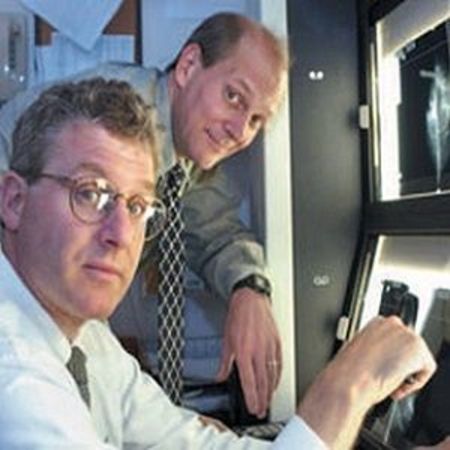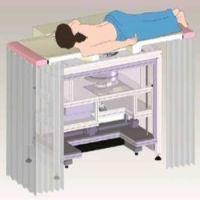A new breast exam that uses MRI and Near Infrared Spectral Tomography (NIRST) is feasible and more accurate than MRI alone, according to researchers from Norris Cotton Cancer Center at Dartmouth College (NH, USA). The findings are published in the peer-reviewed journal Clinical Cancer Research.
Breast MRI is the most sensitive imaging technique for cancer surveillance and is recommended for screening in women with increased risk of breast cancer. However, breast MRI generates many "false positives," which are regions of the breast that "enhance" under imaging technology, but are not malignant. Better imaging could provide additional information for clinicians and potentially reduce the number of MRI-guided biopsies.
The new study examined whether the addition of molecular imaging (NIRST) at the time of MRI would improve the diagnostic accuracy of breast MRI alone by contributing functional information about regions of suspicion in the breast identified by the MRI and helping to categorise the regions as malignant or benign. Results of the study showed that:
"The research is exciting because it shows for the first time, in the largest clinical study to date of the combined MRI+NIRST imaging approach, that improvement in the specificity of breast MRI is possible by adding NIRST to the imaging procedure," explains Keith Paulsen, PhD, who led the study with first author Michael Mastanduno and collaborators from Xijing Hospital in Xian, China.
"In particular, this combination improves on what is reported by breast MRI alone. With additional technical improvements related to exam set-up and delivery, the approach is ready for evaluation in larger clinical studies, including multicentre trials," says Dr. Paulsen, professor of radiology and surgery at Dartmouth's Geisel School of Medicine, and of biomedical engineering at Dartmouth's Thayer School of Engineering.
The team says the next step is to refine the technology to improve its clinical acceptance, making it easier to use and seamless in the standard clinical workflow of breast MRI, as well as increasing the areas of breast coverage with the NIRST sensors.
Source and image credit: Norris Cotton Cancer Center Dartmouth-Hitchcock Medical Center
Breast MRI is the most sensitive imaging technique for cancer surveillance and is recommended for screening in women with increased risk of breast cancer. However, breast MRI generates many "false positives," which are regions of the breast that "enhance" under imaging technology, but are not malignant. Better imaging could provide additional information for clinicians and potentially reduce the number of MRI-guided biopsies.
The new study examined whether the addition of molecular imaging (NIRST) at the time of MRI would improve the diagnostic accuracy of breast MRI alone by contributing functional information about regions of suspicion in the breast identified by the MRI and helping to categorise the regions as malignant or benign. Results of the study showed that:
- Data from the combined imaging procedure improved specificity of the exam from 67 percent for MRI alone, to 89 percent when TOI (tissue optical index) from NIRST imaging was added.
- Sensitivity did not decrease, remaining high at 95 percent, and the AUC (area under the curve) increased to 0.95 from 0.86 for MRI alone.
"The research is exciting because it shows for the first time, in the largest clinical study to date of the combined MRI+NIRST imaging approach, that improvement in the specificity of breast MRI is possible by adding NIRST to the imaging procedure," explains Keith Paulsen, PhD, who led the study with first author Michael Mastanduno and collaborators from Xijing Hospital in Xian, China.
"In particular, this combination improves on what is reported by breast MRI alone. With additional technical improvements related to exam set-up and delivery, the approach is ready for evaluation in larger clinical studies, including multicentre trials," says Dr. Paulsen, professor of radiology and surgery at Dartmouth's Geisel School of Medicine, and of biomedical engineering at Dartmouth's Thayer School of Engineering.
The team says the next step is to refine the technology to improve its clinical acceptance, making it easier to use and seamless in the standard clinical workflow of breast MRI, as well as increasing the areas of breast coverage with the NIRST sensors.
Source and image credit: Norris Cotton Cancer Center Dartmouth-Hitchcock Medical Center
References:
Mastanduno MA, Xu J, Paulsen KD et al. (2015) MR-guided Near Infrared Spectral Tomography Increases Diagnostic Performance of Breast MRI.
Clinical Cancer Research, May 27, 2015; DOI:
10.1158/1078-0432.CCR-14-2546
Latest Articles
healthmanagement, breast cancer, MRI, false positives, molecular imaging, biopsies
A new breast exam that uses MRI and Near Infrared Spectral Tomography (NIRST) is feasible and more accurate than MRI alone, according to researchers from Norris Cotton Cancer Center at Dartmouth College (NH, USA).



























